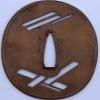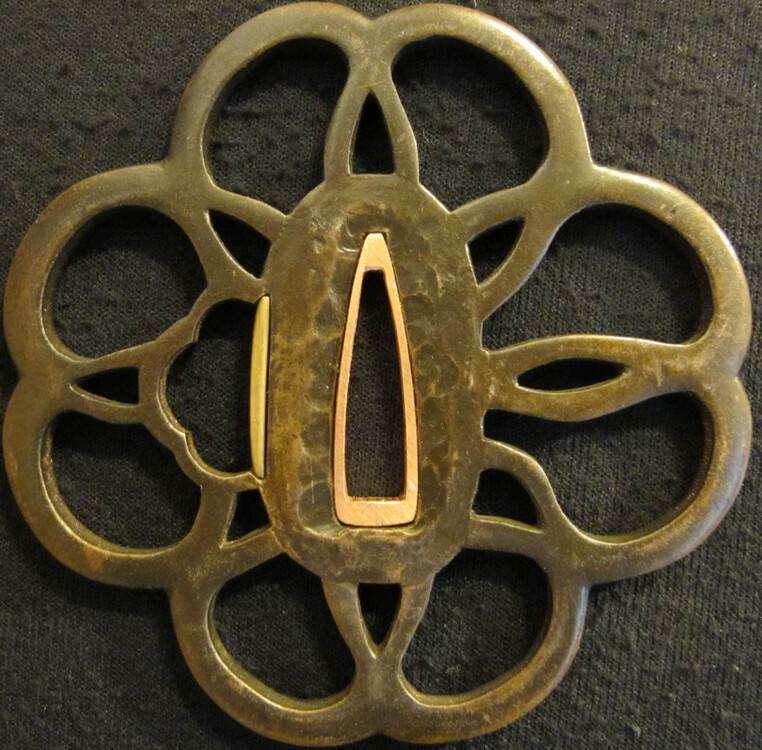-
Posts
868 -
Joined
-
Last visited
-
Days Won
2
Content Type
Profiles
Forums
Events
Store
Downloads
Gallery
Everything posted by Lee Bray
-
Exactly. Caveat emptor. Any item, Nihonto or not. I see the purpose of this forum as exposing outright fakes and dodgy sellers/buyers. The discussion of legit auctions, despite how poor/fantastic/gimei is dubious and, I think, generally avoided by most and not condoned by admin.
-
Knowing Aoi Art's photo's well, I'd agree with Chris and say that these flaws would have been visible in the sites original pictures. Having also just taken a naginata to the same shop for polishing with the same flaws in the shinogiji(open masame grain), I know that Tsuruta-san is not fond of this kind of flaw but was still in agreement that the rest of the blade was healthy enough to take a new polish and also a reliable candidate for Hozon shinsa. The naginata is by Sumimiya, 1600's, for reference. In my case, the blade is 400 yrs old, still has, what I think is, a near original sugata(big, big kissaki and ubu nakago) but the masame hada in the shinogiji is open. I'm happy to live with that. I know others wouldn't be. If you're not, try asking Aoi Art for a return, as suggested.
-
Here's mine. You can see the lines left by the casting quite easily and the quality is plainly not up to the ones already pictured. Dimensions are: 59mm x 48mm x 5mm. 48g. At least the price of silver is rising...
-
That book is heading my way as we write so I'll check it out. Of your three non-ferrous tsuba, are their dimensions similar? I wonder if they are cast with some hand work finishing and if that casting is modern? Not to say yours are cast, just curiosity on my part.
-
Likewise, the second link. (Edit) - that's Ed Marshall's site so it should be ok. Can't find the brass dragon amongst his wares, though. As to the tsuba, I have a tsuba like this in silver, tanto sized, unsigned. I bought it from a reputable dealer - we'd both bid on it via ebay but he won - and it was supposed to be Edo. I was happy enough with it at the time but later, with more experience and a more critical eye, I realised it was cast. No wonder the dealer sold it to me quickly and cheaply after the auction. (It is hard to tell, he may not have known.) When it was cast, I couldn't say, but the lesson has left this tsuba shape etched on my brain. I've seen a fair few of this style tsuba now. It's oft copied, in brass, silver and iron. The iron tsuba are probably genuine and I'd say the brass and silver have a good chance of being modern copies. In the booklet,"The Japanese Sword and its Fittings" printed by the JSSNY, there is a daisho set of this tsuba in iron by Mitsunobu of Musashi province. No date is given.
-
If 'The Last Samurai' is someones first and lasting exposure to Japanese culture, then they get what they deserve.
-
I must have missed the advert that claimed the film was an historical representation. I also must have missed the period when Hollywood and Tom Cruise were given any credibility. I'm glad I missed them if they made you guys feel this way about a movie that's not even really true in the first place. To say a Tom Cruise puts the understanding of Japanese culture back a hundred years is giving Tom way, way, way too much credit. Even more than he gives himself.
-
Patina looks chemically added, too, in my opinion.
-
I honestly wouldn't worry about heat treatment if the edge is rolled. I've rolled many an edge of knives, both custom and production, that have good heat treatment. A naginata that I have had the top 2mm of tip snapped off and a further 2mm was bent just behind the snap. It went in for repair last week and the polisher said there were no issues with the blade. Hamon can still be present if the blade has been through a fire. It depends on the temperature the blade reached; if it only reached a few hundred degrees, it will have been tempered but not to a state where it loses all of the hardened steel and therefore hamon will be still be there but perhaps not as defined or as much activity(if there was any). If it went beyond several hundred then the steel crystals will have returned to a softer state and there will be no hamon.
-
Kozuka(handle) are of a standard size, however I've found that kogatana(blade) are not. Kogatana seem to come in two sizes; standard and slightly larger. Both fit the standard kozuka size, though. So, I'd say you're safe to buy any kozuka you see but exercise a little caution in buying the blade. That said, I think the larger blades are much less common.
-
He wasn't honest enough to use his real name or forthcoming enough to state that they polish NihonTo using amateur polishers so I'll be avoiding their sales.
-
Kung Hei Fat Choi! A set of menuki that I own showing the twelve animals of the zodiac. The rabbit is tempting fate close to the right of the tiger's head.
-

Intricately Carved Koshirea - Nagamaki Blade??
Lee Bray replied to Tcat's topic in Auctions and Online Sales or Sellers
Whilst the carving is reasonable, I wouldn't get overly lost in it. It is not deep and cavernous to my eye, but then I get to see lots of Chinese wood carving, living in HK and traveling through China. If you want deep and cavernous, buy one of those Chinese puzzle balls with the seven layers. Now there's a lesson in carving and they're being cranked out at a rate of knots and cheap as chips. Do a search for high quality carving images from Japan or China. Their quality is far, far superior to what we're seeing in the above sword. -

Intricately Carved Koshirea - Nagamaki Blade??
Lee Bray replied to Tcat's topic in Auctions and Online Sales or Sellers
A skilled artist that did that to the nakago? We're all entitled to our opinion, Jim. -

Intricately Carved Koshirea - Nagamaki Blade??
Lee Bray replied to Tcat's topic in Auctions and Online Sales or Sellers
I thought the same as Jacques with this piece. I'd go so far as to say the blade is a decent fake, too, as it just looks wrong. Naginata hi is crude and shallow whilst the soe hi is crude and deep. Habaki is beveled and has no mune slot. If the nakago wasn't reasonably shaped (allowing for the nasty ana) I'd say this was fake for sure but as it is, I just think it's a later, poor quality tourist blade. Whilst the koshirae 'looks' to be well carved, it doesn't say Japanese to me. -
This is a modification I made to a tsuba to fit a sword. The copper insert in the nakago ana is friction fit so no damage to the tsuba is done at all.
-
I agree the yasurime look a little fresh for early Shinto but I'd say there's a chance they could be. There is a smith in Hawley's that signed Hizen Kuni Yoshihiro, YOS 1449, who worked c1865. A possibility.
-
Suspicions of the translation or authenticity of the mei? It is Yoshihiro.
-

Does anyone know what this is???
Lee Bray replied to Dakota's topic in General Nihonto Related Discussion
Looks like Brian nailed it. That nakago looks fake. -

planned shirasaya turned into koshirae
Lee Bray replied to werner's topic in General Nihonto Related Discussion
Honoki is a soft wood; from what I understand, magnolia, basswood, poplar and alder are used in the production of modern saya outside of Japan but this is going beyond the scope of this forum. The information is readily available on other sword and knife websites. Oils can take a long time to leech out of a wood. They are part of the properties of a wood and do not disappear quickly. It's not moisture in the glue soaking through the wood you have to worry about, it's the chemical make up of the glue that is the problem. Titebond II & III have an additive that corrodes steel long after the glue is dry. Titebond, however, doesn't. These questions and pitfalls are what makes a craftsmen worth his trade. -

planned shirasaya turned into koshirae
Lee Bray replied to werner's topic in General Nihonto Related Discussion
Using hardwood is probably not a good idea as it can contain oils, resins or tannins. Oak is well known for its corrosive properties when combined with carbon steel. Honoki is very low in oils and does not harm steel which is why it is used. Also be vary wary of the glue used to join the wooden components. Some of the available wood glues can cause corrosion problems. Let's hope you haven't spent time and money creating a rust box for your tanto. -

What is more important, Kantei or picking a good sword?
Lee Bray replied to David Flynn's topic in Nihonto
Indeed, an excellent post. Thank you, Reinhard. The same Hobbits that found the ultimate treasure, kept if safe and ultimately had the strength of will to destroy it and save mankind, thereby allowing us to indulge our interest in NihonTo? I'd say that allows them a little civility and respect in my book. -

What is more important, Kantei or picking a good sword?
Lee Bray replied to David Flynn's topic in Nihonto
My guess would be the middle sword based on my opinion that it has the clearest, most consistent nioi-guchi. -
A great film. I've watched it a few times on DVD now and still gobsmacked every time I watch it.
-
I'm certainly envious but hopefully not too smelly. Let's play nice, chaps. Too few of us as it is without squabbling about levels of experience and competence.



